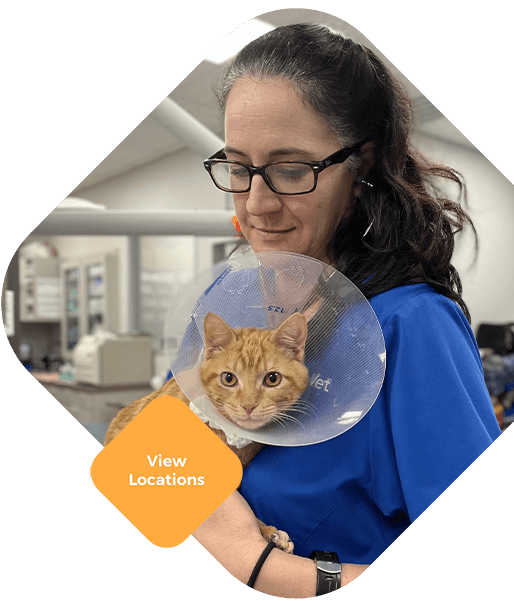Some of our hospitals offer laser surgery for your pet.
A laser creates a specific tissue reaction depending on the wavelength of laser light it produces. For example, CO2 lasers emitting infrared light at 10,600nm, have an exceptional absorption by the water molecules normally found in soft tissue. This CO2 laser energy instantly vaporizes the intracellular water, vaporizing the cells, while leaving the surrounding tissue virtually unaffected. This action makes the CO2 laser the best choice for general soft tissue surgery by producing the following benefits:
Less Pain
CO2 laser energy seals nerve endings as it moves through tissue. As a result, the patient feels less pain post-operatively.
Less Swelling
CO2 laser energy seals lymphatic vessels. Additionally, because only a beam of invisible light contacts the tissue, there is no bruising or tearing of tissue. This reduced tissue trauma minimizes inflammatory responses, reducing swelling.
Less Bleeding
Laser energy seals small blood vessels as it cuts. When defocused, the laser becomes an effective coagulation device. Not only does the hemostatic cutting benefit the patient, it provides a clear, dry surgical field for the surgeon. Without bleeders continually obstructing the field, the overall procedure time may be decreased, and the visualization of the anatomy is unsurpassed.
Quicker Recovery
Decreased bleeding, swelling, and pain means the patient can return to normal activity and the home environment faster. This provides benefits for the patient, client and veterinarian.
Ablation
The unique ability of a CO2 laser to vaporize (ablate or “erase”) tissue sets it apart from any other surgical tool, even other lasers. With the proper tips and power settings, the CO2 Laser can be used to precisely remove tissue layer by layer, or to aggressively vaporize entire tumors.




